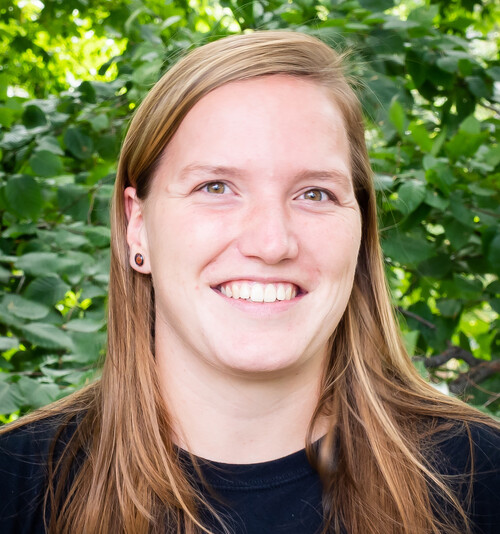Floor Broekgaarden

“How is it that two stellar black holes come together and merge?” asks 2023 Harvard Horizons Scholar Floor Broekgaarden. It’s not unusual to find massive stars in pairs, but usually when one becomes a supernova and explodes, the other tends to drift away from, not toward, its partner.
“My question is really, ‘What makes some of these stars so special?’” she says. “What processes in their lives—how they were formed and how they died—makes it so that maybe one in a million of these pairs stay together, merge as black holes, and form these gravitational waves?”
It’s important to understand how massive stars live and die because of their role in the formation of some of the fundamental elements of the universe. “They are probably the sources of heavy elements like sodium, but also oxygen, and many others we see on Earth today,” Broekgaarden says. A greater understanding requires the development of computer simulations that model the universe from the Big Bang to today—an unimaginably complex task rife with uncertainties.
That’s where Broekgaarden’s work comes in. A data scientist as well as an astrophysicist, the PhD student for the first time used new statistical techniques to incorporate different classes of uncertainty and look at them simultaneously. “The theoretical framework and algorithms that Floor developed provide the translation from the observed black hole properties—measured through gravitational waves—to the original stars that formed them and the full evolutionary path of that process,” says Broekgaarden’s doctoral advisor, Professor of Astronomy Edo Berger.
Broekgaarden’s algorithm also addresses the key bottlenecks in complex modeling: cost and time. Modeling billions and billions of stars from the Big Bang until today is very computationally expensive and can take years to complete. Broekgaarden developed an algorithm that works a bit like the old board game Battleship, where the object is to locate your opponent’s vessel in as few guesses as possible.
“Like the game, my algorithm begins with random guesses and then, once it scores a ‘hit’ and finds a pair of black holes that collide, [it] adapts and revolves the simulation around that area to look for more,” she explains. “Using this method, we can speed up simulations by more than a factor of 100. So, instead of you know, waiting 300 days—almost a year—you now have to wait only three days. It’s a huge difference.”
Daniel Holz, a professor of astronomy at the University of Chicago who sits on Broekgaarden’s dissertation committee, says that her work is at the very cutting edge of human understanding of how the universe makes its black holes. “This is one of the most exciting and important topics in astrophysics, and Floor is lighting the black hole path.”
Broekgaarden says she has high hopes for her research and her Horizons project: to advance understanding of how elements—and the universe itself—evolved.
“Massive stars drive the processes that are the basis of the cosmos,” she says. “As we study them, I think we’ll find a lot of surprises along the way. We’ve already had a few so far!”

